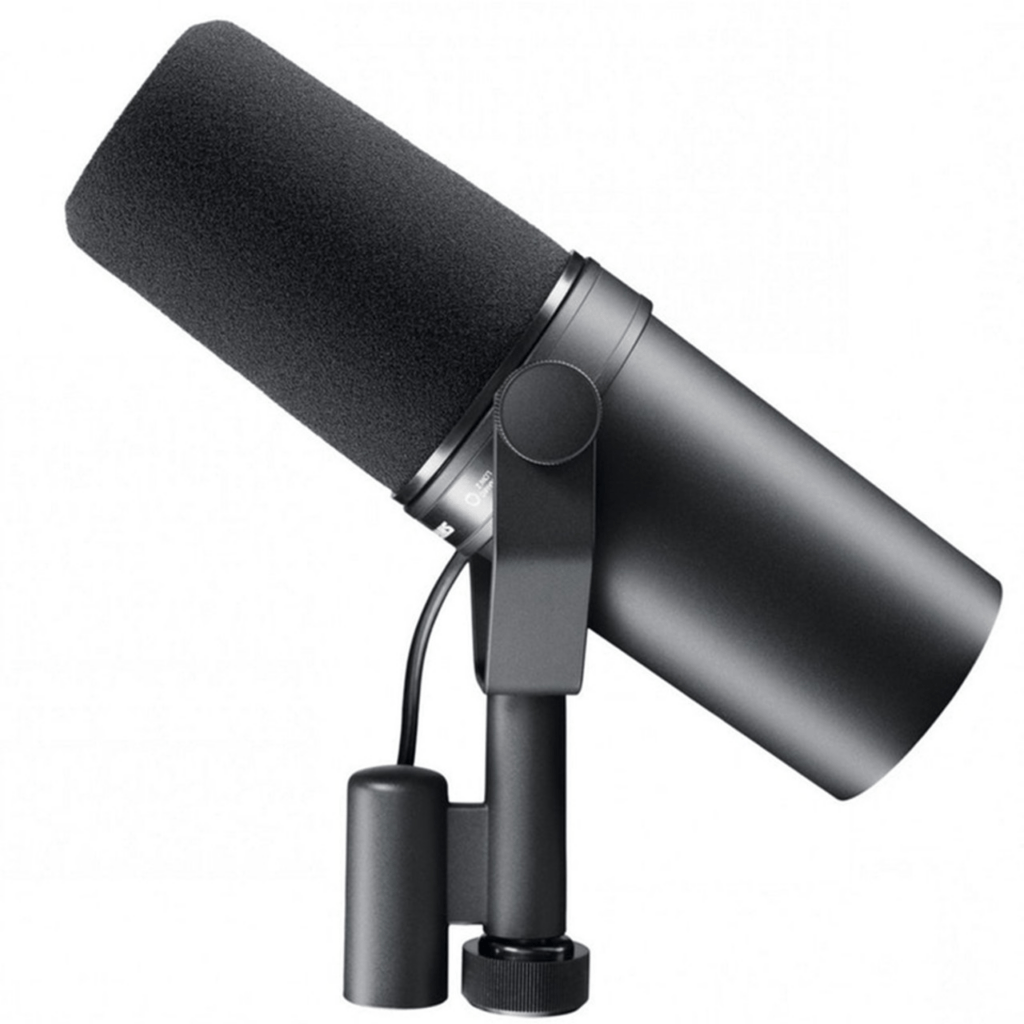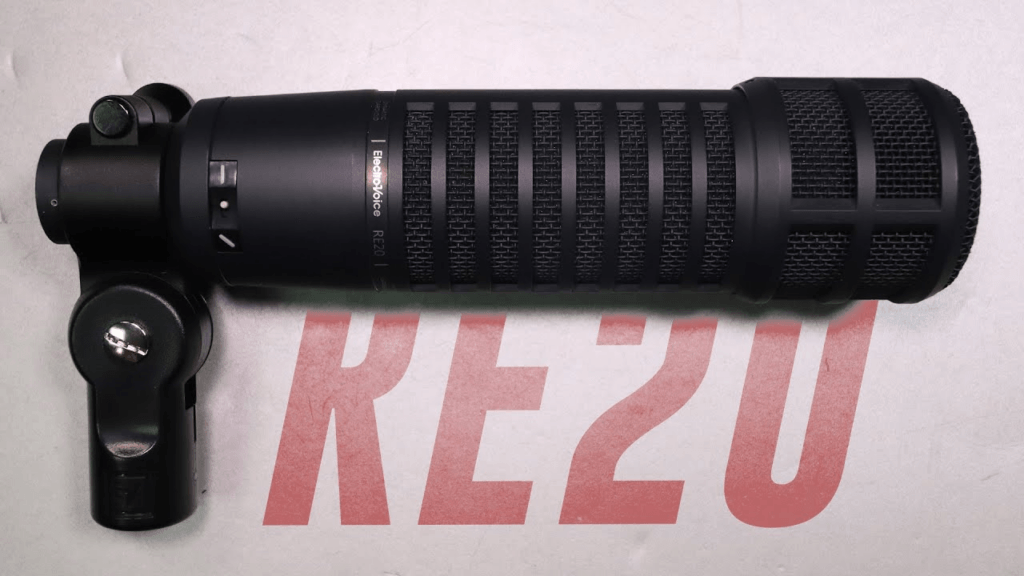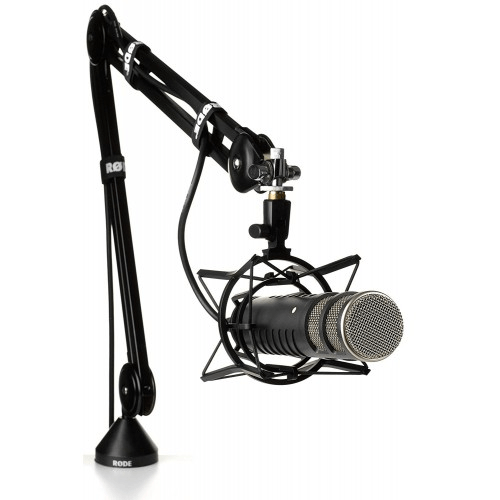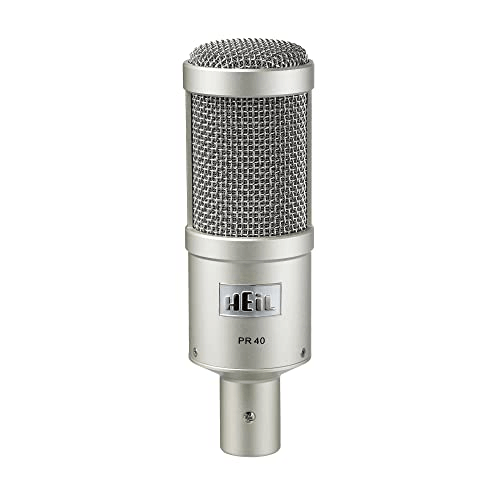5 Best Dynamic Microphones for Recording Vocals in 2024
Are you ready to capture studio-quality vocals from the comfort of your own space? Whether you’re laying down tracks or podcasting, the right microphone is crucial for crystal-clear sound. Enter the dynamic microphone—a robust and versatile choice known for its warmth and reliability. Perfect for both budding artists and seasoned professionals, dynamic mics are designed to handle powerful vocals without losing an ounce of emotion or clarity. In this listicle, we’ve rounded up the best dynamic microphones for recording vocals, ensuring you find the perfect match for your voice and recording needs. Let’s dive into the top contenders that promise to elevate your audio experience.
When searching for the best dynamic microphone for recording vocals, you will want to consider several key criteria to ensure you’re making the right choice. Here’s what to look for:
- Frequency Response: This refers to the range of frequencies the microphone can pick up. A good vocal microphone typically has a broad and flat frequency response, allowing for natural-sounding vocal reproduction.
- Polar Pattern: Dynamics mics often have cardioid or supercardioid patterns, which means they pick up sound best from the front and minimize noise from the sides and rear. This characteristic is crucial for isolating the vocalist in environments with background noise.
- Sensitivity: This dictates how well the microphone can detect quiet sounds. While dynamic mics are generally less sensitive than condenser mics, which is beneficial for loud sources, look for one that captures the nuances of the voice.
- Durability: The robust construction of dynamic microphones makes them suitable for studio and live settings. Assess the build quality to ensure longevity.
- Versatility: Consider whether the microphone performs well across different vocal types and styles. It should accommodate a wide range of voices, from soft and mellow to loud and powerful.
- Brand Reputation and Reviews: Often, trusted brands have a history of quality. Reviews from other users can provide insights into how the microphone performs in real-world situations.
By weighing these factors, you can pinpoint a dynamic microphone that will deliver excellent vocal recordings suitable for your needs.
Below is a simplified table structure that captures these specifications in an easy-to-understand manner:
| Feature | Shure SM7B | Electro-Voice RE20 | Sennheiser MD 421 | Rode Procaster | Heil PR-40 |
|---|---|---|---|---|---|
| Approximate Price | $400 | $450 | $380 | $230 | $330 |
| Polar Pattern | Cardioid | Cardioid | Cardioid | Cardioid | Cardioid |
| Frequency Response | 50 Hz to 20 kHz | 45 Hz to 18 kHz | 30 Hz to 17 kHz | 75 Hz to 18 kHz | 28 Hz to 18 kHz |
| Sensitivity | -59 dB | -56 dB | -2 dB | -56 dB | -53.9 dB |
| Impedance | 150 ohms | 150 ohms | 200 ohms | 320 ohms | 375 ohms |
| Suggested Applications | Broadcasting, Podcasts, Music Vocals | Broadcasting, Voice Overs, Instruments | Instruments, Vocals, Broadcasting | Broadcasting, Podcasting, Voice Overs | Podcasting, Voice Overs, Instruments |
| Connector Type | XLR | XLR | XLR | XLR | XLR |
| Additional Features | Internal “air suspension†shock isolation, Detachable windscreen | Steel case and humbucking coil, Variable-D design | Five-position bass roll-off switch, Rugged design | Internal pop filter, Robust construction | Steel body, Copper-wound dynamic element |
Please note that the “Approximate Price†listed is based on a general market estimate and can vary depending on the region, time, and retailer.
Shure SM7B

Overview:
The Shure SM7B is a legendary microphone, and for good reason. Used by podcasters, musicians, and vocal artists worldwide, it’s known for its exceptional sound quality and durability. The SM7B has a smooth, flat, wide-range frequency response appropriate for both music and speech in all professional audio applications. It also includes a highly effective pop filter that reduces plosive sounds in vocal speech. What makes the SM7B truly shine, in my opinion, is its ability to capture warm and smooth vocals while effortlessly rejecting electromagnetic hum. Especially in a home studio, right, where you’ve got computers, monitors and other electronic devices, this feature is invaluable.
When it comes to recording vocals, the SM7B manages to capture the richness and nuances of the voice. It provides a nice balance between body and clarity, which makes it versatile across various vocal types and ranges. Even without a lot of post-production, the sound recorded by the SM7B is often rich and radio-ready. However, to get the best out of this mic, it might need a decent preamp with enough gain – something to keep in mind if you’re considering this as your go-to mic.
Specs:
- Frequency Response: 50Hz to 20kHz
- Polar Pattern: Cardioid
- Impedance: 150 ohms
- Sensitivity: -59 dB
- Connector: XLR
Pros:
- Exceptional sound quality with a flat frequency response
- Efficient at rejecting background noise
- Includes internal pop filter and shock mount
- Durable construction that stands the test of time
Cons:
- Requires a good preamp with plenty of gain
- Higher price point than some entry-level mics
- Heavier and bulkier, which might require a robust mic stand
Price:
The Shure SM7B is usually priced at the higher end of the dynamic microphone market, reflecting its professional quality. Expect to invest in the range of $350 – $400 USD for this microphone, which, while not the cheapest option out there, is a worthy investment for serious vocal recording.
In conclusion, the Shure SM7B is a microphone that lives up to its reputation. It’s a well-rounded, reliable choice that can elevate vocal recordings to professional standards. When paired with the right equipment and settings, this microphone can truly make your voice shine. If you’re serious about recording, the SM7B is a solid investment that should be at the top of your list.
Electro-Voice RE20

Overview:
The Electro-Voice RE20 is a legendary player in the world of dynamic microphones, highly regarded by broadcasters and musicians alike for its ability to handle intricate vocal nuances with grace. Its fame comes from its Variable-D design, which minimizes proximity effect, allowing voice work to maintain a consistent tone, even when moving closer to or further from the mic. This makes the RE20 an exceptional choice for both seasoned professionals and passionate enthusiasts looking to capture smooth, natural vocals.
In my experience, the RE20 excels in delivering clarity and detail without the harshness that sometimes accompanies high sound pressure levels. When recording vocals, the RE20 offers a rich, full-bodied sound profile that complements a wide range of voices, beautifully capturing the depth and character that can be lost with less forgiving microphones.
Specs:
- Type: Dynamic
- Polar Pattern: Cardioid
- Frequency Response: 45 Hz to 18 kHz
- Impedance: 150 ohms
- Connector Type: XLR
Pros:
- The Variable-D technology is a game-changer for maintaining consistent vocal sound quality without proximity effect issues.
- Built like a tank, this microphone is incredibly durable and can withstand the rigors of studio and broadcast environments.
- The natural, smooth sound capture makes equalization in post-production less of a necessity, saving time and preserving authenticity.
- Excellent at rejecting background noise, thanks to its cardioid pattern, which is essential for clear vocal recordings.
Cons:
- The RE20 is on the heavier side, which may require a robust microphone stand to support its weight adequately.
- Its natural and flat response might not flatter all types of voices, so it’s not a one-size-fits-all solution.
- As a premium microphone, it might be a significant investment for home studio enthusiasts or those just starting out.
Price:
Given its professional-grade performance, the Electro-Voice RE20 is not the cheapest option available, typically retailing somewhere in the mid-upper price range for dynamic microphones. However, the price is justified by its unmatched performance in various vocal recording scenarios, representing a worthy long-term investment for serious vocal recording and broadcasting. The exact price can vary, but expect it to be in the ballpark of $400 to $500. Remember that prices fluctuate, and deals or bundles can also affect the final cost.
When considering the Electro-Voice RE20, it’s vital to appraise not only the upfront cost but also the value it brings over years of reliable service. This mic isn’t just a purchase; it’s an investment into professional-grade vocal recordings that stand the test of time.
Sennheiser MD 421

Overview:
The Sennheiser MD 421 is often revered as one of the most versatile dynamic microphones available on the market. Notoriously known for its full-bodied sound and robust design, it’s a favorite among audio engineers and musicians alike for recording vocals as well as a myriad of instruments. My personal experience with the MD 421 reinforces its reputation as a workhorse in the studio. Its ability to handle varied vocal styles and its durability make it an essential part of any microphone arsenal.
The warmth and clarity it brings to vocals are exceptional and it masters the challenge of capturing both quieter, nuanced performances and powerful, energetic vocals with finesse. Its characteristic presence peak adds a distinct tactile texture to vocals, helping them to cut through in a mix without necessitating extensive post-processing.
Specs:
- Frequency Response: 30 Hz – 17 kHz
- Polar Pattern: Cardioid
- Connector: XLR-3
- Max Sound Pressure Level: ≈140 dB
- Weight: Approximately 385 g
Pros:
- Remarkably versatile, great on a multitude of sources beyond just vocals.
- Provides a natural warmth that enriches vocal recordings.
- Durably built, which reassures long-term usage without frequent repairs.
- Its feedback rejection is excellent due to its cardioid pattern.
- Does not necessarily require a preamp with a lot of gain, unlike some of its peers.
Cons:
- Its unique shape and size require specific clips or mounts, which can be a slight inconvenience.
- The presence peak, while beneficial in cutting through a mix, may require some equalization attention for sibilant or overly bright vocalists.
- The lack of a built-in pop filter means you’ll need to invest in one for the best vocal takes.
Price:
As pricing can vary based on sales, location, and packaging, it’s worth noting that the MD 421 generally falls into the mid-range price category for dynamic microphones. It may appear pricier than some entry-level alternatives, but its performance and reliability justify the cost for those serious about their craft.
In conclusion, the Sennheiser MD 421 does not disappoint. Its sonic signature and adaptability ensure it’s not simply a microphone, but an investment toward professional, dynamic recordings. Whether it’s the centerpiece of a home studio or part of a diverse microphone locker in a professional setting, the MD 421 is sure to leave its mark on any recording project.
Certainly! Here’s a comprehensive review of the Rode Procaster dynamic microphone for recording vocals:
Rode Procaster Dynamic Microphone

The Rode Procaster is a professional-grade dynamic microphone specifically designed with the vocal artist in mind. It boasts a tight polar pattern and tailored-for-voice frequency response that’s hard to beat within its price category. I have found it to be particularly adept at isolating the speaker’s voice from background noise, making it an excellent option for those recording in less-than-ideal acoustic environments.
In terms of build quality, Rode has created a solid piece of equipment that feels robust enough to withstand the rigors of a traveling artist or active studio. Its metal construction also imparts a confidence that this microphone can last through years of use. The integrated pop filter is a thoughtful addition, and it does a decent job of mitigating plosives, although for the best results, an external pop shield can be advantageous.
Sonically, the Procaster impresses with its clarity. One aspect that stands out is its natural warmth, which adds a certain depth to spoken vocals without muddying the sound. This warmth makes it a compelling choice not only for music but for podcasting and voice-over work, where voice presence is essential.
Specs:
- Polar Pattern: Cardioid
- Frequency Range: 75Hz – 18kHz
- Output Impedance: 320Ω
- Sensitivity: -56.0dB re 1 Volt/Pascal (1.60mV @ 94 dB SPL) +/- 2 dB @ 1kHz
Pros:
- Excellent at rejecting off-axis noise, enhancing the clarity of the voice.
- Built-in shock mounting system to mitigate the transfer of vibrations and handling noise.
- Solid, durable construction that feels built to last.
- Natural warmth in the vocal frequency range which can flatter the voice.
Cons:
- Heavier than some other models, which could be a drawback for boom arm setups.
- Requires a good amount of gain, so a preamp or an interface with ample headroom is recommended.
- Lacks the versatility needed for instrument miking, making it a specialized vocal mic.
Price:
The Rode Procaster typically sits in the mid-range price bracket for dynamic microphones. It’s an investment into quality without breaking the bank, especially given its vocal-enhancing characteristics. While prices may vary depending on the retailer and geographical location, the value it provides for dedicated vocal recording is significant.
From my experience with the Procaster, it stands out as a reliable workhorse for anyone seeking to record clear, detailed vocals without the excess noise. Balanced in performance and price, it’s tough to find a dynamic mic in its tier that outdoes the Procaster’s capabilities for vocal work. Whether you’re starting a podcast, recording an audiobook, or laying down vocal tracks for music, the Procaster is a choice that warrants serious consideration.
Heil PR-40 Dynamic Microphone

Overview:
The Heil PR-40 dynamic microphone is an exceptional tool for capturing vocals with high fidelity and excellent detail. It’s designed with the podcaster and professional broadcaster in mind, but it’s just as effective for vocalists looking for a mic that delivers a pro-studio sound without requiring an elaborate setup. What strikes me the most about the Heil PR-40 is its ability to offer a smooth, flat response across a wide frequency range, meaning it captures the true essence of the voice without added coloration.
With its cardioid pickup pattern, it’s incredibly focused on sound coming from the front and does a great job minimizing background noise. The PR-40 is robustly constructed, sporting a heavy steel body and a large diaphragm, which attributes to its rich and full sound quality. This is a microphone that not only has the chops to back up its price tag but also gives a professional edge to any vocal recording project.
Specs:
- Frequency Response: 28Hz to 18kHz
- Polar Pattern: Cardioid
- Output Connection: XLR, 3-pin
- Element Type: Dynamic
- Weight: 13.5 oz
Pros:
- Delivers a professional, broadcast-quality sound.
- Offers a wide frequency response for stellar vocal reproduction.
- Excellent rear noise rejection due to its cardioid polar pattern.
- Solid build quality that suggests it will last through years of use.
- Doesn’t necessarily require phantom power or a preamp to perform well.
Cons:
- May be pricier than some entry-level options, which might deter the budget-conscious.
- Lacks the onboard switch for EQ adjustments that some of its competitors offer.
Price:
The Heil PR-40 usually sits in the mid-high price range for dynamic microphones specialized in vocal recording. While its price may not make it the first choice for hobbyists, the investment is justifiable for a serious audio professional or an enthusiast seeking superior sound quality in their recordings.
The Heil PR-40, in conclusion, represents a significant sweet spot for those who take vocal recordings seriously and are looking for a broadcast-grade input device without necessarily venturing into the world of high-end studio condenser mics. Its well-engineered output clarity and durability make it a worthy contender in its category and a favorite among discerning audio professionals.
Conclusion:
Choosing the best dynamic microphone for recording vocals comes down to understanding your specific needs, the environment in which you’ll be recording, and how the microphone’s characteristics match your voice. The microphones reviewed offer a diverse range of tonal qualities, durability, and price points, ensuring there’s a perfect match for every artist. Whether you’re recording in a studio or performing live, the dynamic options listed promise to deliver quality sound and reliability, allowing you to capture every nuance of your vocal performance.
FAQs:
Q1: Why choose a dynamic microphone for vocals over a condenser?
A1: Dynamic microphones are generally more robust and less sensitive to loud sounds and high-pressure levels, making them ideal for energetic vocal performances, especially in live settings. They also tend to handle ambient noise better, which is beneficial for recording in less-than-ideal acoustic environments.
Q2: Can I use a dynamic microphone for both studio recording and live performances?
A2: Absolutely! Dynamic microphones are versatile and are often used in both settings. They are known for their durability, which makes them suitable for the rigors of live performances, while quality dynamic mics also provide the clarity and responsiveness needed for studio recordings.
Q3: Do I need any additional equipment when using a dynamic microphone for vocals?
A3: While you can plug a dynamic microphone directly into an audio interface or mixer, using a good preamp can enhance the microphone’s performance. Additionally, depending on your setup, you may need a microphone stand, pop filter, and XLR cables for connectivity.
Ae Control Cabinet,Electrical Ae Control Cabinet,Ae Motor Control Cabinet,Ae Electrical Control Cabinet
Huaian Qiangsheng Cabinet Co., Ltd. , https://www.qscontrolcabinet.com